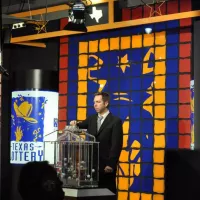A billboard is a large-scale outdoor advertising structure strategically positioned in high-traffic locations to capture the attention of drivers and pedestrians. These structures display sizable advertisements, often used by brands to enhance brand recognition or promote new products to a broad audience. Billboards are a common and effective means of outdoor advertising.
1909: Cities begin banning billboards in the US
In 1909, many cities in the US began enacting laws to ban billboards, including a California Supreme Court case (Varney & Green vs. Williams), but the First Amendment has made this difficult.
1925: Burma-Shave advertisements
In 1925, Burma-Shave began using a unique highway advertising technique with 4- or 5-part messages on multiple signs, ending in a punchline, hooking the reader.
1936: Wall Drug erects billboards advertising "free ice water"
In 1936, Wall Drug erected billboards advertising "free ice water", which was crucial to drawing business in small towns. The town of Wall, South Dakota, was essentially built around the many thousands of customers per day those billboards brought in.
1937: Billboards absent in Canberra due to ordinance
In 1937, billboards were largely absent in Australia's capital city, Canberra, due to an ordinance that prohibited unauthorized signs on Commonwealth land.
1959: Alaska prohibits billboards upon achieving statehood
In 1959, Alaska's law prohibiting billboards went into effect upon its achievement of statehood.
1963: Burma-Shave advertisements end
In 1963, Burma-Shave discontinued their unique highway advertising technique, which consisted of 4- or 5-part messages on multiple signs that ended in a punchline.
1965: Highway Beautification Act signed into law
In 1965, the Highway Beautification Act was signed into law in the US, limiting billboards to commercial and industrial zones on "Federal Aid Primary" and "Defense" highways and requiring states to maintain "effective control" of billboards or lose 10% of their federal highway dollars.
1968: Vermont prohibits billboards
In 1968, Vermont's law prohibiting billboards went into effect.
1971: San Diego enacts billboard ban
In 1971, a San Diego law championed by Pete Wilson cited traffic safety and driver distraction as the reason for the billboard ban
1971: Tobacco advertising banned on radio and television in the US
In 1971, tobacco advertising was banned on radio and television in the US, leaving billboards and magazines as some of the last places tobacco could be advertised.
1981: Wall Drug billboards bring in 20,000 customers per day
In 1981, Wall Drug billboards brought in 20,000 customers per day
1981: Supreme Court overturns San Diego billboard ban
In 1981, the Supreme Court narrowly overturned San Diego's billboard ban, in part because it banned non-commercial as well as commercial billboards.
1991: 450,000 billboards on US highways
In 1991, there were approximately 450,000 billboards present on US highways, serving as a primary method for drivers to find lodging, food, and fuel.
1999: God Speaks billboard campaign begins in Florida
In 1999, an anonymous person created the God Speaks billboard campaign in Florida with witty statements signed by God.
1999: Cigarette billboards replaced with anti-smoking messages
In 1999, as part of the tobacco settlement, all cigarette billboards in America were replaced with anti-smoking messages.
2000: Rooftop billboards obscure Athens architecture
In 2000, rooftops in Athens had grown so thick with billboards that it was difficult to see its famous architecture.
2004: Athens demolishes rooftop billboards for Olympics
In 2004, in preparation for the Summer Olympics, Athens completed a four-year project demolishing most rooftop billboards to beautify the city, overcoming resistance from advertisers and building owners.
January 2007: São Paulo bans billboards and advertising on vehicles
In January 2007, São Paulo, Brazil, banned billboards and advertising on vehicles, while also restricting the dimensions of advertising on shop fronts.
2007: São Paulo institutes billboard ban
In 2007, São Paulo, Brazil instituted a billboard ban due to a lack of viable regulations for the billboard industry.
April 2010: Toronto implements municipal tax on billboards
In April 2010, Toronto implemented a municipal tax on billboards, with a portion of the tax intended to help fund arts programs in the city.
May 2010: First "scented billboard" erected
In May 2010, Bloom grocery chain erected the first "scented billboard" in Mooresville, North Carolina, emitting the odors of black pepper and charcoal to suggest a grilled steak.
June 2010: Scented billboard run ends
In June 2010, the run of the first "scented billboard" erected by the Bloom grocery chain near Mooresville, North Carolina, which had been emitting the odors of black pepper and charcoal to suggest a grilled steak, came to an end on June 18th after being active from May 28th.
2017: Top billboard advertisers in the US
According to the Outdoor Advertising Association of America, the top billboard advertisers in the United States in 2017 were McDonald's, Apple and GEICO.
2017: Australian Capital Territory considers relaxing billboard laws
In 2017, the Australian Capital Territory considered relaxing the 1937 law prohibiting unauthorized signs on Commonwealth land to allow more outdoor advertising. A record 166 submissions were received, with only 6 supporting the change.
Mentioned in this timeline
McDonald's is an American multinational fast food chain As of...
The United States of America is a federal republic located...
California is a U S state on the Pacific Coast...

An apple is a widely cultivated edible fruit originating in...
Australia officially the Commonwealth of Australia encompasses the Australian mainland...
North Carolina is a Southeastern U S state the th-largest...
Trending

7 days ago Powerball Jackpot Reaches $719M: Winning Numbers Announced November 29th, Check Your Tickets!
2 days ago Zac Brown Band Releases 'Love & Fear' Album, Zac Brown Shares Childhood Story
9 months ago Latvia Imposes Entry Ban on Citizens from Russia and Belarus Amid Tensions
4 days ago Waymo self-driving car navigates through active police standoff with passenger onboard, creating tense situation.

2 days ago Caitlin Clark's soaring earnings: $114K WNBA salary, $16M sponsors despite injury in 2025.
6 days ago Jacksonville area anticipates rain as warm trend persists in Northeast Florida, Southeast Georgia.
Popular
Matt and Ross Duffer known as the Duffer Brothers are...
Aftyn Alyssa Behn is an American politician currently serving as...

XXXTentacion born Jahseh Dwayne Ricardo Onfroy was a controversial yet...

Candace Owens is an American conservative political commentator and author...

Ilhan Omar is an American politician currently serving as the...

Lane Kiffin is an American football coach currently serving as...